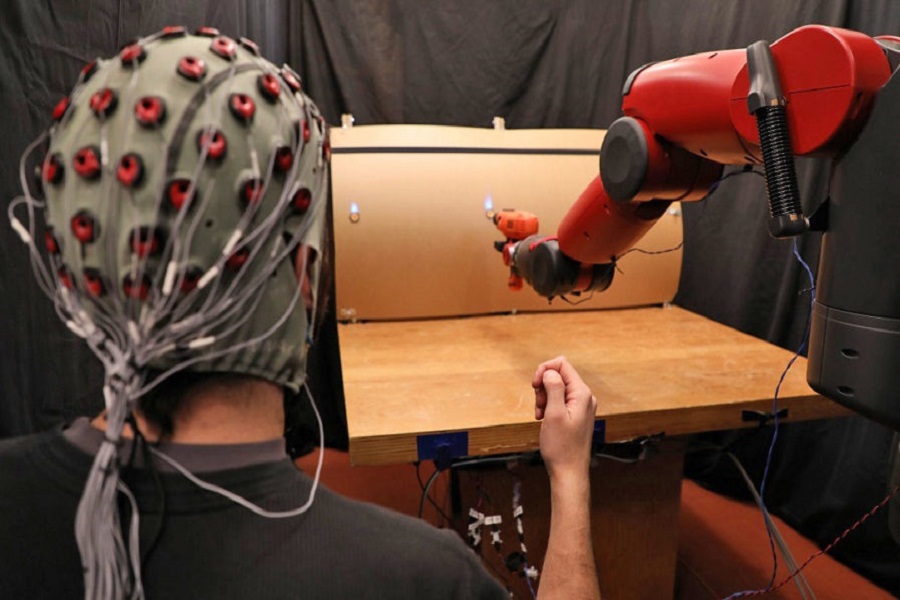
Published :
Updated :

Science fiction emerged as a reality by paving the way for human-robot communication and developing robot functionalities utilising brain waves. Using human brain impulses to operate robots has advanced technology by integrating computer engineering, electrical engineering, and BCI.
Even as an experimental technique, brain-computer interfaces (BCI) have expanded the possibilities for helping paralysed individuals reclaim control of their limbs.
The concept of controlling an object using brain waves became a reality in 1988 when electroencephalogram (EEG) brain impulses were utilised to drive a robot. The most frequent approach is the Emotiv Epoc EEG Headset, which makes the electrodes on the scalp distinguishable.
The skull parameters are assessed in two planes on each side of the head to determine the position of the electrodes. Later, the information from the headset is delivered to the receiving computer via Bluetooth or a proprietary wireless protocol, and it is processed after being stored in four major panels by the Emotiv Control Panel.
The first panel uses unique colours to indicate the signal's connection quality. The second panel summarises the user's emotions, while the third panel identifies the sentiments associated with the user's participation.
The last panel measures brain activity as the user acts. When an action is completed, it is depicted as a game using a cube.
Following that, circumstances identified by the Emotiv Control Panel are transmitted to a robot capable of moving in particular locations via Emokey (a software medium that translates into keyboard inputs for usage by other functions).
It operates via rules and instructions. If no order is received from EmoKey, the robot remains in a neutral posture. When the robot gets a control command, it maintains its anticipated position.
Once a portion of the movement has been identified, the Emokey software converts the detection findings into keyboard characters.
These characters are then transmitted with the client script to the server unit installed on the robot hardware, where the robot performs the intended movement.
More suitable solutions are being tested to enhance the process of EEG signals to drive a robot, as EEGs (electroencephalography) are insufficient to assess the wearer's correct desire and engagement while operating a robot.
mehnazdiba132004@gmail.com


 For all latest news, follow The Financial Express Google News channel.
For all latest news, follow The Financial Express Google News channel.